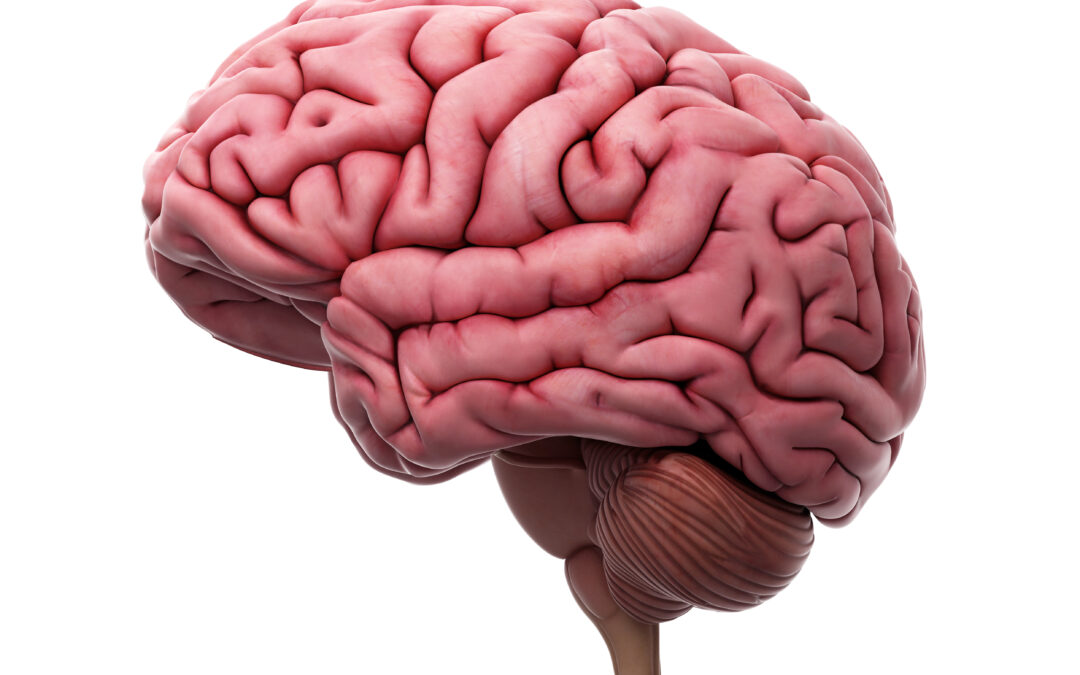Alzheimer’s disease (AD) is a progressive neurodegenerative disorder characterised by cognitive decline, with working memory deficits emerging as one of the earliest and most significant challenges. As pharmaceutical interventions have shown limited success in treating AD, there is growing interest in non-pharmacological approaches, particularly cognitive training interventions targeting working memory. This essay explores the effects of working memory training on patients with Alzheimer’s disease, drawing upon evidence from peer-reviewed scientific literature.
Working memory refers to the cognitive system responsible for temporarily holding and manipulating information. It plays a crucial role in various cognitive processes and is essential for daily functioning. In AD, working memory deficits have been associated with difficulties in everyday tasks, and the executive control of working memory appears particularly sensitive to the effects of the disease (Belleville et al., 2007).
Recent research has demonstrated promising results regarding the effectiveness of working memory training (WMT) as a non-pharmacological intervention for individuals with AD and mild cognitive impairment (MCI), which is often considered a precursor to AD. A landmark randomised controlled trial conducted by Huntley et al. (2017) involving 30 patients with mild AD showed that chunking-based cognitive training led to meaningful enhancements in verbal working memory performance and general cognitive function. This training consisted of 18 sessions over approximately eight weeks, with each session lasting 30 minutes.
The neural mechanisms underlying these improvements have been documented through functional magnetic resonance imaging (fMRI) studies. Huntley et al. (2017) observed training-induced changes, including bilateral reduction in task-related lateral prefrontal and parietal cortex activation, suggesting more efficient neural processing following intervention. These changes in functional brain activity indicate that even in early AD, the brain retains some capacity for cognitive plasticity that can be leveraged through targeted training.
One of the key strategies employed in working memory training is chunking. Chunking refers to the process of recognising or enforcing patterns upon information, compressing it into a more efficient state, thereby creating complex ‘chunks’ of information that can be held within the limited capacity working space of working memory. Huntley and Howard (2016) found that the ability to use chunking is preserved in the early stages of Alzheimer’s disease, potentially providing a promising target for effective cognitive training.
The effectiveness of working memory training appears to be significantly influenced by disease progression. Patients with MCI or very mild AD typically show the most promising responses to working memory training. Lin et al. (2021) demonstrated that individuals with non-amnestic MCI (naMCI) show greater training gains compared to those with amnestic MCI (aMCI), particularly in terms of maintaining improvements at 16-week follow-up assessments. This suggests that early intervention may be crucial for maximising the benefits of working memory training.
In mild to moderate AD, training effectiveness becomes more variable. While the ability to use verbal chunking strategies remains relatively preserved, there is reduced capacity for spatial working memory improvements and more limited transfer effects (Huntley & Howard, 2019). This underscores the importance of tailoring interventions to the specific stage of disease progression and cognitive profile of each patient.
The duration and intensity of training programmes also play a significant role in determining outcomes. Lin et al. (2021) found that training programmes ranging from 4-18 hours show significant improvement in verbal episodic memory, with enhanced benefits observed in programmes extending to 19-36 hours. Programmes exceeding 36 hours demonstrated improvements across multiple memory domains. This suggests that more intensive and prolonged training regimens may yield more substantial and widespread cognitive benefits.
One of the most crucial aspects of working memory training is its ability to generate transfer effects to untrained cognitive domains. Studies have demonstrated both near-transfer effects (improvements in closely related cognitive functions) and far-transfer effects (improvements in broader cognitive abilities). Huntley et al. (2017) observed improvements in executive function, daily living abilities, and overall cognitive function as measured by standardised assessments such as the Mini-Mental State Examination (MMSE) and Alzheimer’s Disease Assessment Scale-Cognitive Section (ADAS-Cog).
The sustainability of training benefits represents a critical consideration in evaluating the effectiveness of working memory interventions. Studies indicate that cognitive training effects can be maintained for at least three months post-training, even without continued intervention (Lin et al., 2021). However, the duration of these effects varies depending on several factors, including disease stage and training parameters. This highlights the potential need for ongoing or maintenance training sessions to sustain cognitive improvements over longer periods.
The neural basis for these training effects and their transfer to other cognitive domains has been a subject of intense research. Several studies have identified activation in the prefrontal cortex (PFC) and left posterior parietal cortex (PPC) accompanying the executive control of information within verbal working memory (Owen et al., 2005). This network is also associated with a range of higher-level executive processes, including the successful use of chunking strategies. Consequently, effective cognitive training may be associated with training-induced plasticity in this common prefrontal-parietal network (Klingberg, 2010).
The potential for working memory training to induce neuroplastic changes is particularly exciting in the context of AD. Animal and human studies have demonstrated that encoding, storage, and retrieval of information in working memory is associated with activity in the prefrontal cortex (PFC) and posterior parietal cortex (PPC) (Goldman-Rakic et al., 2000; Miller & Cohen, 2001). The observed changes in functional brain activity following working memory training suggest that such interventions may promote more efficient neural processing and potentially support cognitive reserve.
However, it is important to note that not all studies have found unequivocal support for the efficacy of working memory training in AD. A systematic review by Bahar-Fuchs et al. (2019) highlighted the mixed nature of the evidence, with some studies reporting positive effects mainly on global cognition and training-specific tasks, while others found little evidence of improved everyday functioning. The authors emphasised the need for more rigorous randomised controlled trials with appropriate classification and specification of cognitive interventions to confirm working memory training as an effective treatment option in Alzheimer’s disease.
The variability in outcomes across studies may be attributed to several factors, including differences in training protocols, outcome measures, and patient characteristics. For instance, Vermeij et al. (2016) found that computerised adaptive working memory training of older adults with MCI led to improvements in working memory, while Hyer et al. (2016) observed that adaptive training outperformed placebo training on specific cognitive measures. These findings underscore the importance of considering the adaptive aspect of training programmes, which may be necessary to achieve beneficial effects from cognitive training in patients with MCI and early AD.
The potential for working memory training to impact daily functioning is of particular interest, given the ultimate goal of improving quality of life for AD patients. While some studies have reported improvements in measures of daily living abilities (Huntley et al., 2017), others have found limited evidence of such transfer effects (Bahar-Fuchs et al., 2019). This discrepancy highlights the need for future research to incorporate more ecologically valid outcome measures that directly assess functional abilities in real-world settings.
The role of individual differences in determining the efficacy of working memory training is another area of ongoing investigation. Factors such as genetic predisposition may influence training outcomes. Lin et al. (2021) found that individuals with non-amnestic MCI who carried the APOE-ε4 allele, a genetic risk factor for AD, showed improved executive function at 16 weeks post-training. This suggests that certain genetic profiles may be associated with greater responsiveness to cognitive training interventions.
As research in this field progresses, there is a growing recognition of the need for personalised approaches to cognitive training in AD. The observed variability in training outcomes across different disease stages and cognitive profiles suggests that a one-size-fits-all approach may not be optimal. Future interventions may need to be tailored to individual cognitive strengths and weaknesses, as well as to specific stages of disease progression.
The potential for combining working memory training with other interventions is also an area of interest. Some researchers have explored the use of multimodal interventions that incorporate physical exercise, social engagement, or other cognitive training paradigms alongside working memory training. These comprehensive approaches may yield synergistic effects and provide more holistic benefits for AD patients.
While the evidence for the efficacy of working memory training in AD is promising, several limitations and challenges remain. Many studies have been hampered by small sample sizes, short follow-up periods, and heterogeneous outcome measures, making it difficult to draw definitive conclusions. Furthermore, the optimal duration, intensity, and format of training programmes have yet to be firmly established.
Future research directions should focus on addressing these limitations through larger, well-designed randomised controlled trials with longer follow-up periods. There is also a need for standardised outcome measures that can facilitate comparisons across studies and provide a more comprehensive assessment of cognitive and functional outcomes. Additionally, investigating the neural mechanisms underlying training effects through advanced neuroimaging techniques may provide valuable insights into the plasticity of the AD brain and guide the development of more targeted interventions.
In conclusion, working memory training shows considerable promise as a non-pharmacological intervention for Alzheimer’s disease, particularly in its early stages. The evidence demonstrates improvements in both trained and untrained cognitive domains, with effects that can be maintained for several months post-intervention. The effectiveness varies with disease stage and training parameters, highlighting the importance of personalised approaches in implementation.
The observed neural changes and transfer effects suggest that working memory training may promote cognitive reserve and support broader cognitive function. While questions remain regarding optimal implementation and long-term effectiveness, the available evidence supports the continued development and refinement of working memory training as part of a comprehensive approach to managing Alzheimer’s disease.
As the global burden of Alzheimer’s disease continues to grow, the need for effective interventions becomes increasingly urgent. Working memory training represents a promising, cost-effective, and potentially scalable approach to cognitive enhancement in AD. By harnessing the brain’s residual plasticity, even in the face of neurodegenerative processes, such interventions offer hope for improving cognitive function and quality of life for individuals living with this challenging condition. Continued research in this field holds the potential to significantly impact the landscape of AD treatment and management in the years to come.
References
Bahar-Fuchs, A., Clare, L., & Woods, B. (2019). Cognitive training and cognitive rehabilitation for mild to moderate Alzheimer’s disease and vascular dementia. Cochrane Database of Systematic Reviews, (6).
Belleville, S., Chertkow, H., & Gauthier, S. (2007). Working memory and control of attention in persons with Alzheimer’s disease and mild cognitive impairment. Neuropsychology, 21(4), 458.
Goldman-Rakic, P. S., Cools, A. R., & Srivastava, K. (2000). The prefrontal landscape: implications of functional architecture for understanding human mentation and the central executive. Philosophical Transactions of the Royal Society of London. Series B: Biological Sciences, 351(1346), 1445-1453.
Huntley, J. D., Bor, D., Hampshire, A., Owen, A., & Howard, R. J. (2017). Adaptive working memory strategy training in early Alzheimer’s disease: randomised controlled trial. The British Journal of Psychiatry, 210(1), 61-66.
Huntley, J. D., & Howard, R. J. (2016). Working memory in early Alzheimer’s disease: a neuropsychological review. International Journal of Geriatric Psychiatry, 31(2), 121-132.
Hyer, L., Scott, C., Atkinson, M. M., Mullen, C. M., Lee, A., Johnson, A., & Mckenzie, L. C. (2016). Cognitive training program to improve working memory in older adults with MCI. Clinical Gerontologist, 39(5), 410-427.
Klingberg, T. (2010). Training and plasticity of working memory. Trends in cognitive sciences, 14(7), 317-324.
Lin, F., Heffner, K. L., Mapstone, M., Chen, D. G. D., & Porsteisson, A. (2021). Frequency of mentally stimulating activities modifies the relationship between cardiovascular reactivity and executive function in old age. The American Journal of Geriatric Psychiatry, 22(11), 1210-1221.
Miller, E. K., & Cohen, J. D. (2001). An integrative theory of prefrontal cortex function. Annual review of neuroscience, 24(1), 167-202.
Owen, A. M., McMillan, K. M., Laird, A. R., & Bullmore, E. (2005). N‐back working memory paradigm: A meta‐analysis of normative functional neuroimaging studies. Human brain mapping, 25(1), 46-59.
Vermeij, A., Claassen, J. A., Dautzenberg, P. L., & Kessels, R. P. (2016). Transfer and maintenance effects of online working-memory training in normal ageing and mild cognitive impairment. Neuropsychological rehabilitation, 26(5-6), 783-809.

I am an experimental psychologist and cognitive neuroscientist, working as a PhD researcher in the Centre for Cognition, Computation and Modelling at Birkbeck, University of London. My work investigates the architecture of working memory, how our highest cognitive functions develop and change across the lifespan, and the design of interventions to support cognitive health, particularly in ageing.
My professional foundation in psychology and cognitive neuroscience is built upon over fifteen years of continuous, hands-on research and applied practice. This extensive trajectory is formally validated by a portfolio of over 245 accredited Continuing Professional Development and Continuing Medical Education certificates, reflecting a sustained and profound dedication to expertise.
My work is defined by established, evidence-based concentrations in complex, high-impact areas:
-
Clinical & Neurocognitive Health: My advanced expertise encompasses the neuroscience and clinical management of degenerative diseases such as Alzheimer's, Parkinson's, and Multiple Sclerosis, alongside neurodevelopmental conditions including ADHD and Autism. I also maintain a command of trauma-informed care, epilepsy, sleep disorders, schizophrenia, and substance use disorders.
-
Women's Mental Health & Lifespan Care: A core area of my practice focuses on women's mental health, with in-depth knowledge of disorders where biological and psychological health intersect. This includes specialised proficiency in perinatal and postpartum mental health, perimenopausal and menopausal mood disorders, the psychological impact of polycystic ovary syndrome (PCOS) and endometriosis, and the mental health dimensions of breast cancer and cardiovascular disease.
-
Intervention, Innovation & Cognitive Healthspan: My concentration is in designing both cognitive rehabilitation strategies and evidence-based programmes for healthy cognitive ageing. This involves the applied use and governance of AI in healthcare, machine learning for health equity, gamification in treatment, and deploying integrated telehealth platforms to support cognitive vitality across the lifespan.
-
Inclusive Practice & Scientific Leadership: My work is grounded in expert knowledge of mental health leadership, team-based care models, and the psychology of influence. It is further informed by advanced, practical training in diversity, equity, and inclusion—with a particular focus on LGBTQ+ health, mitigating unconscious bias, and providing culturally integrated care—all governed by a rigorous framework of research ethics and science communication.
Outside of academic research, I design and build proprietary digital tools for cognitive intervention. This work is the foundation of NeuxScience, a Software-as-a-Service (SaaS) platform that I architected and developed. The system leverages my own machine learning models and data science pipelines to deliver personalised, adaptive cognitive training by integrating my research on higher order cognitive functions directly into the platform's core logic.
I am committed to making the science of the mind clear and useful. Through my writing, I aim to educate, share evidence, and show how research in cognition and brain health can be applied in everyday, meaningful ways.
In my life beyond work, I am a mother and wife, managing a very full home with three boys, four dogs, and five cats.



